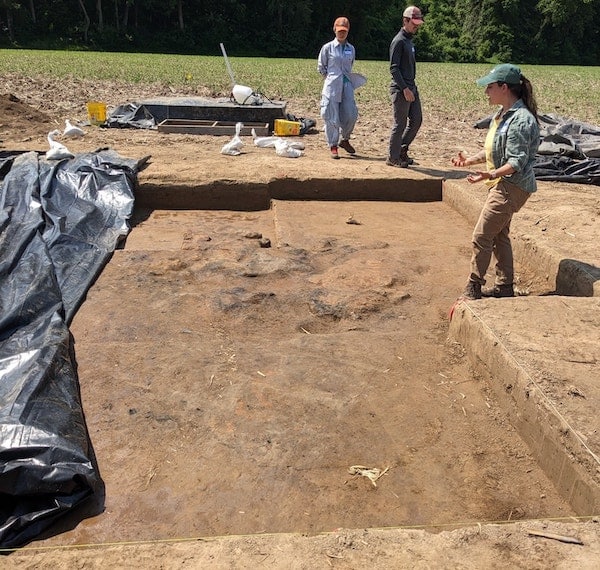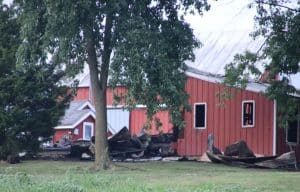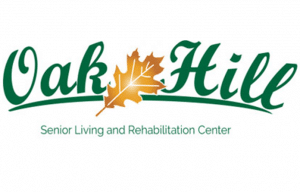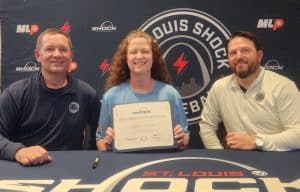Digging for history in Valmeyer

It’s not every day a team of Boy Scouts can help a Ph.D candidate with her dissertation while she helps them earn an elusive merit badge, but that was the case Saturday.
Autumn Melby, a doctoral candidate at the University of Pennsylvania Department of Anthropology, has been in Monroe County this month working on an archaeological excavation.
The site is a field in the “Hawkins Hollow” area at the bottom of the bluffs near Woodland Ridge, which connects with Bluff Road northeast of Valmeyer.
Melby and her team are looking for artifacts in the soil which may provide clues about the Cahokian-era Native Americans who lived there in the 1300s.
She got some help with her research Saturday when a group of local when boys and girls from local Scouts BSA Troops joined her at the site for a tour and introduction to the project before getting to work at Camp Vandeventer.
The scouts sifted through soil samples to find and document anything they found.
Melby described the collaboration during a presentation Sunday afternoon at the History Museum of Monroe County in Waterloo.
“One of my favorite things we have done this season beyond the actual archaeology was hosting an archeology merit badge day,” Melby began.
She noted that particular scout badge is “very difficult” to obtain due to specific requirements and the in-depth nature of the project.
“The things that (the scouts) were required to know are things that I would be quizzing my college students on. They also have to volunteer for eight hours on an archaeological site,” Melby explained. “They were helping with the research in real time.”
She said about 25 scouts completed the requirements for a merit badge in just one day.
In addition to sifting for artifacts, scouts participated in educational and recreational activities.
They brought heirlooms from home for an exercise which had participants consider how an anthropologist would interpret the piece if it were found without any other context.
The scouts also learned about lithics – stone tools used for hunting or building – like those found at the Hawkins Hollow site. The scouts then got a chance to practice archery and spear-throwing on the camp grounds.
“Some of them are pretty good shots,” Melby said.
The team has continued excavation work this week to uncover more of what appears to be a Native American structure similar to those found at Cahokia Mounds State Historic Site, believed to be largest urban settlement north of Mexico prior to the arrival of European colonists.
Some estimates put the Cahokia population at about 200,000 at its peak – more people than contemporary London.
Melby is cautiously optimistic with her team’s discoveries so far.
“I don’t want to jump too ahead of myself before we start getting into interpretations, specifically because we don’t have that full-profile view of what this house looked like,” Melby said. “We still have plenty of work to do.”
The latest find in Hawkins Hollow is the second such structure to be studied there.
Interest in that spot was piqued in 1990 when a number of artifacts were found by researchers. In 1996, a separate team inspected the area prior to construction of Woodland Ridge.
While the findings were recorded, the projects were not exhaustive and no further work was done until 2015 when evidence of a structure approximately 30 feet by 30 feet was discovered near the tree line on the north side of Woodland Ridge.
In addition to finding lithics and a midden – a concentrated area of organic material and other debris – the 2015 team found two burned logs, suggesting the structure was destroyed by fire.
Melby said the size of that building suggests a communal area, possibly for hunting parties.
The findings of the current project just south of Woodland Ridge show the footprint of a building around 13 feet by 20 feet, indicative of a residence similar in size to those found in 13th Century Cahokia.
In November, Melby and her team began research with a three-acre survey of the area to determine a starting point for possible excavation.
At the beginning of May, the crew began to dig and discovered the latest structure, which may have also been burned.
The team also found a number of arrowheads and stone drill bits of Cahokian style along with shards of pottery.
While Melby said finding a pottery rim would provide a better idea of the period in which it was created, she said the shards’ composition of shell-tempered clay may place them in the 1300-1350 A.D. range.
The team also found what appears to be a large midden, although time constraints and focus on the excavating the main structure led Melby to describe the research implications as a “future Autumn problem.”
The current site and several other previously documented areas in Monroe County near the base of the bluffs are of particular interest to Melby for her doctoral dissertation.
She is hoping to shed light on the lifestyles of rural Native Americans who did not reside in the main Cahokia complex.
Melby’s stated goal is to “examine change through time in relation to the development and decline of societal complexity and address what effects these processes had upon the lives of the everyday people who are often overlooked in archaeological and historical research.”
The Hawkins Hollow sites are about 25 miles from Cahokia, making it and other sites in the American Bottom south of Columbia ideal locations to glean data.
In addition to examining differences between the rural and urban lifestyles, Melby wants to give clarity to what happened at the end of the Cahokia civilization around 1350.
The Cahokia settlement is believed to have begun around the year 600, with significant growth around 1000 and reaching its peak in 1200 before being seemingly abandoned around 1350.
Using terms such as “collapse,” “doomed” and “dissolution” to characterize the end of Cahokia does more harm than good, Melby argued.
“Archaeologists really run the risk of allowing this perpetuation of inaccurate and sometimes really harmful stereotypes and narratives, such as ‘the vanishing Indian.’ These people didn’t die off; they didn’t just disappear. They went elsewhere. We are tasked with understanding how a political system – not a people – fell apart,” Melby said during her presentation.
Melby and her team are wrapping up work at the end of the week, but she said she is far from finished at Hawkins Hollow.
“My hope is to return to the site in the very near future to… really get a good profile view (of the structure) to understand how it works in conversations with those earlier excavations.”
See pictures and videos of the Hawkins Hollow site and learn more about the project by visiting the Southern American Bottom Archaeology page on Facebook.






